
When is it time to stop teaching phonics? The easy answer is that your state and/or national curricula will have guidelines. My personal opinion, however, is that a teacher should stop teaching phonics to a student when that student has automatic recall of the letter-sound correspondences and can both read and spell texts with a high level of ease and accuracy. In this blog, I will talk about the importance of not determining a set finishing point for phonics instruction for all children but rather tailoring teaching to student needs, because children vary greatly in the language skills they bring to school and develop at different rates.
There is an absence of research on how many years a phonics program should run, how many letter-sound correspondences should be taught and how many different ways of using these to read and write words should be practised for the benefits of phonics to be maximised. It is generally assumed that students will ’learn to read’ in their first three years of full-time schooling and ‘read to learn’ from the beginning of their fourth year at school.
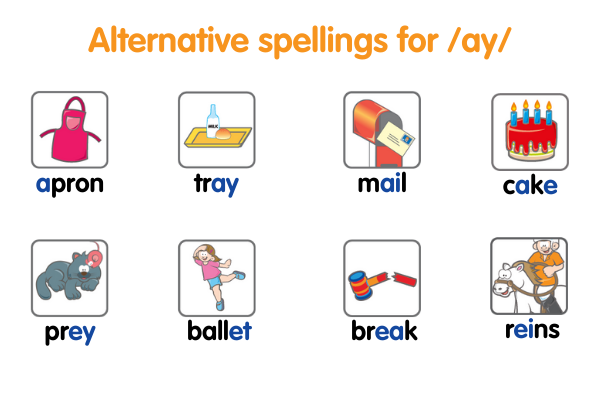 How far should we teach – every alternative spelling?
How far should we teach – every alternative spelling?Phonic Knowledge and Word Recognition is a sub-strand of the Language strand of English in Australia’s national curriculum. In Year 2, students are expected to understand that a sound can be represented by various letter representations and ‘use most letter-sound matches including vowel digraphs, less common long vowel patterns, letter clusters and silent letters when reading and writing words of one or more syllable’.
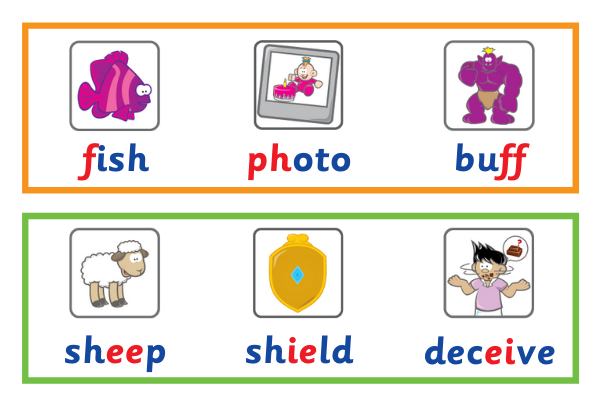 In Year 2, Australian students are expected to understand that there are many
In Year 2, Australian students are expected to understand that there are many In Year 3, the emphasis shifts from the development to the application of phonic knowledge and to the use of morphemic knowledge (affixes in particular). Year 4 has only three descriptors in the sub-strand, indicative of the reduced importance placed on phonic knowledge in instruction and the assumption that students will recognise most words. The descriptors now include use of word origins and of context to identify correct spelling.
England’s national curriculum has 4 key stages. In Key Stage 1, Year 1 students are expected to respond speedily with the correct sound to graphemes for all phonemes, including – where applicable – alternative sounds for graphemes. By lower Key Stage 2 (Years 3 and 4), it is expected that students will ‘be able to read age-appropriate books accurately and at a speed that is sufficient for them to focus on understanding what they read rather than on decoding individual words’.
The reality is that, in a number of English-speaking countries, only one in three students read proficiently by the beginning of Year 3. A long-term study has found that students who are not proficient in reading by the end of third grade are four times more likely to drop out of high school than proficient readers. As phonics skills and knowledge are critical for decoding ability, phonics instruction should continue beyond Year 2 for the two thirds of students who have not achieved reading proficiency.
Reading requires recognition and is easier than spelling, which requires production, so students typically need ongoing phonics instruction to develop the phonics skills needed for spelling well after they can read with a high level of accuracy.
This is reflected in the Letters and Sounds framework published by England’s Department for Education and Skills in 2007, on which many synthetic phonics programs are based. It is a systematic framework which expects children to begin receiving instruction by the age of five, with the aim that they will be fluent readers by the age of seven. Because of the length of time it takes to learn to spell, Letters and Sounds does not expect that children will be spelling fluently by age seven.
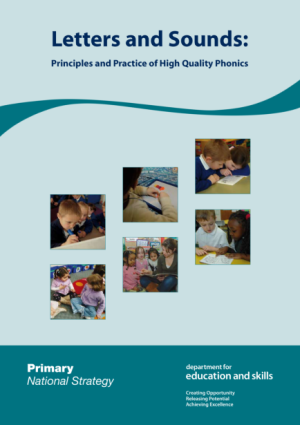 The Department for Education’s
The Department for Education’s When trying to determine when to stop teaching phonics, a teacher must factor spelling needs into the decision-making. Few students will have mastered all of the phonic knowledge they need for accurate spelling by Year 3.
Phonics programs typically present a fixed sequence of letter-sound correspondences, scheduled by the teacher or school from the beginning to the end of the school year.
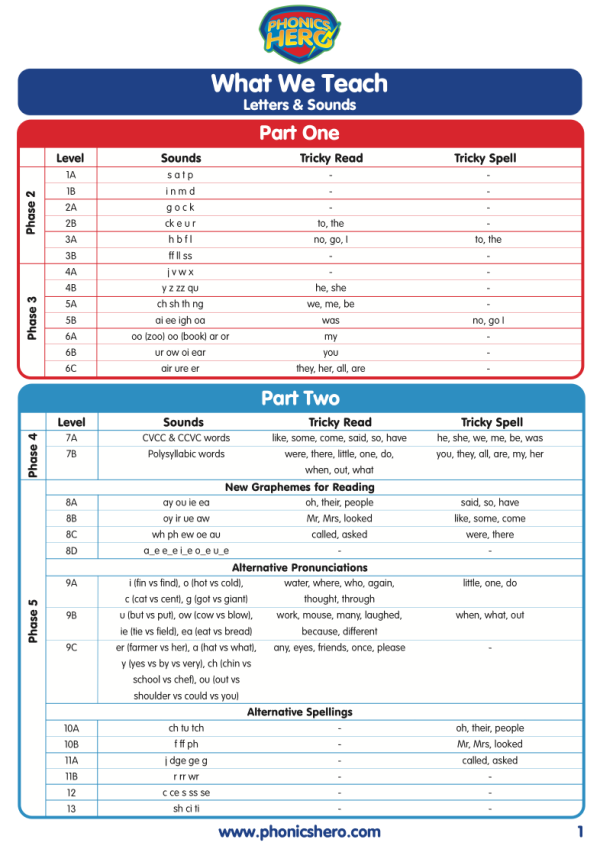 Phonics Hero’s Letters and Sounds Order
Phonics Hero’s Letters and Sounds OrderStudents do need to work through the sequence outlined by the program the school is following but that does not mean that they should all be expected to work through that sequence at the same rate. Children who have already developed phonics skills and can apply them appropriately in reading and writing do not require the same level and intensity of phonics instruction provided to children at the initial phases of reading and/or spelling acquisition.
It is foolish to assume phonics knowledge on the basis of the age or grade level of a student (particularly in the midst of a pandemic when a student’s learning experience may have been impacted by school closures, the limitations of online learning or homeschooling by someone who may not have English phonics skills).
To determine if a student has enough phonics skills to warrant you calling a halt to phonics instruction, you must assess those skills – in both reading and spelling. You can read more about assessment in my blog post: Phonics Assessment: Don’t Assume – Assess!
Some free assessment tools to consider are:

It is important in testing a student who is an advanced reader or speller to use off-level testing so that no artificial ceiling is placed on performance. For example, don’t use a Year 1 spelling test for an advanced Year 1 learner – use a Year 3 test, or higher, in order to determine how advanced the knowledge/skill of the student is.
To paraphrase Sir Jim Rose, phonics instruction is necessary but not sufficient for reading and spelling. As a student’s phonics skills increase, the teacher can shift the emphasis of instruction to other components of reading and spelling. That doesn’t mean that phonics instruction stops, rather that less time is devoted to it. In reading, more emphasis might be given to vocabulary development, comprehension and fluency. In spelling, more emphasis might be given to semantic knowledge and etymology, syntax and morphology. I am still teaching phonics skills to students in secondary school, but this would typically be the teaching of less common letter-sound correspondences, often accompanied by an explanation of etymology, in one literacy session per week.
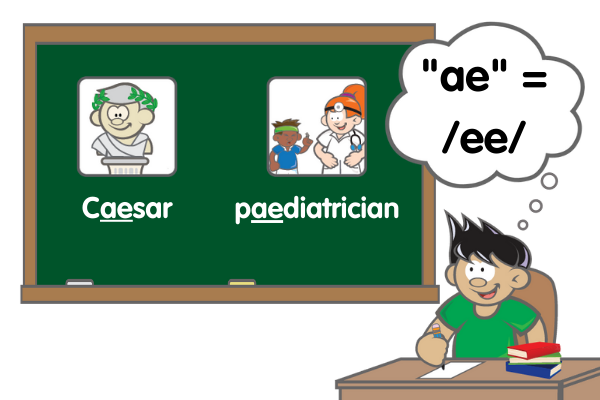 Phonics is still useful in secondary school!
Phonics is still useful in secondary school!Reading and writing are developmental processes, so within any year group there is likely to be at least a five-year spread in skills and knowledge. It is vital that the teacher meets students at their point of need.
Gifted readers or spellers are likely to become disengaged, and even underperform, if required to undertake the phonics instruction outlined by the state/national curriculum for their grade level. I once taught a Year 1 boy who was reading his favourite text, Hamlet, for the second time! Students advanced in reading should be developing orthographic, morphemic and etymological skills, vocabulary and comprehension strategies while peers are working on what is better suited to their needs.
Your assessments should make it obvious which students require a differentiated program – remedial or enrichment. Phonics Hero’s Child Accounts and Phonics Lessons are a great example of a program that facilitates differentiation. When children start playing on their Child Account, they take a Placement Test which identifies the most appropriate level for them to start on. Teachers can set levels for each individual child, regardless of age or grade. In the no-prep Phonics Lessons, the teacher can select the level of support required by a particular student in task completion or alter the complexity of the target words.
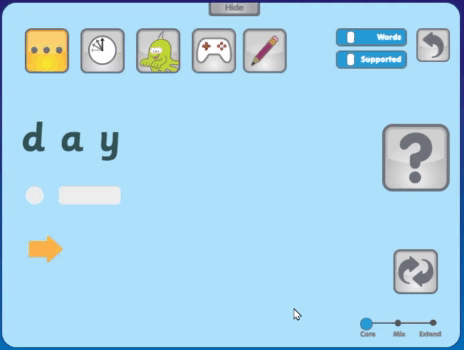
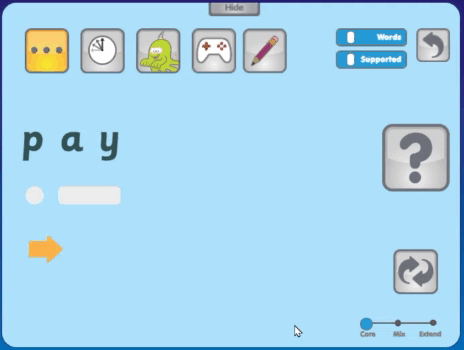
When do I stop teaching phonics? I don’t. However, the frequency, duration and intensity with which I teach it, and the extent to which it is accompanied by information about morphology or etymology changes. Try a ‘need-to-know’ approach. Don’t waste the students’ time or yours teaching them what they already know. Don’t teach them information that is too advanced for them. Teach them what they need.